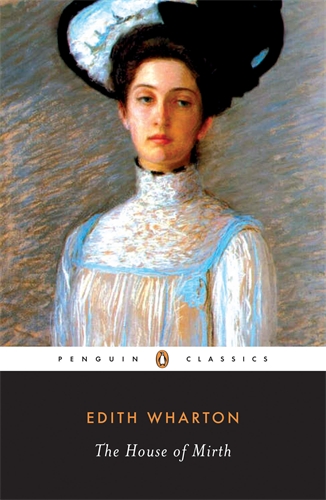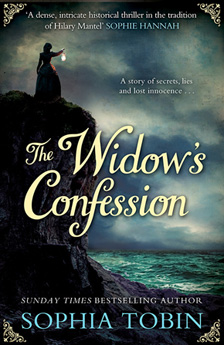Ghosts of New York
by Sophia Tobin I have an American heiress to thank for leading me to Edith Wharton. I was a teenager – lank-haired, history addict, eye for drama – and I was visiting Blenheim Palace with my parents when I caught sight of a creature from the Gilded Age. Consuelo Vanderbilt, wife of the 9th Duke of Marlborough, looked down at me from a portrait by John Singer Sargent. The harmonious arrangement of the painting – Duke, Duchess, two sons and pet dogs – concealed a darker truth. Consuelo had been coerced into the marriage, her fortune used to restore Blenheim Palace before the unhappy couple divorced; she would only find love and happiness later in life. Of course, this dramatic story thrilled my teenage mind, and when I learned that Edith Wharton had chronicled the lives of people like Consuelo in her novels, I was sold. I had little idea that the book I picked up as a result – The House of Mirth – would be so important to me twenty years later.
I have an American heiress to thank for leading me to Edith Wharton. I was a teenager – lank-haired, history addict, eye for drama – and I was visiting Blenheim Palace with my parents when I caught sight of a creature from the Gilded Age. Consuelo Vanderbilt, wife of the 9th Duke of Marlborough, looked down at me from a portrait by John Singer Sargent. The harmonious arrangement of the painting – Duke, Duchess, two sons and pet dogs – concealed a darker truth. Consuelo had been coerced into the marriage, her fortune used to restore Blenheim Palace before the unhappy couple divorced; she would only find love and happiness later in life. Of course, this dramatic story thrilled my teenage mind, and when I learned that Edith Wharton had chronicled the lives of people like Consuelo in her novels, I was sold. I had little idea that the book I picked up as a result – The House of Mirth – would be so important to me twenty years later.
Edith Wharton was born into nineteenth-century New York society, and started writing in her teens, an acute observer of its mores. The House of Mirth, published in 1905, is the story of Lily Bart, who at 29 has grace, intelligence and extraordinary beauty, but no money. Despite the ruin and death of her father, her mother has instilled a love of wealth in her and a fear of living a ‘dingy’ life. By the time we meet Lily, her parents are dead, and she is an unwilling companion to a rich relative. Her goal is to achieve wealth through an advantageous marriage, and this is something which, with her looks and charm, is well within her grasp. But Lily is drawn to Lawrence Selden, a man who does not have the requisite money, but who understands her.
Lily’s tragic fate is partly shaped by her indecisiveness. “Poor Lily,” writes Wharton, “for all the hard glaze of her exterior, (she) was inwardly as malleable as wax.” She is thwarted at every turn, sometimes by circumstance, but often by her inability to choose a direction and keep to it. Her vanity and love of money keep her chained to the idea of achieving wealth, leading her into morally ambiguous dealings with a married man; but paradoxically her true nature does not allow her to take the necessary step to marry one of her rich suitors, or to ruin the man she loves by revealing compromising letters. Wharton, however, makes it clear where the blame lies: “she was so evidently the victim of the civilization which had produced her, that the links of her bracelet seemed like manacles chaining her to her fate.”
Wharton had posed a question to her readers: can any woman really survive this society? If so, how? As I wrote, I realised I was trying to answer her.”
The House of Mirth is about many things: the corrupting effect of greed, the brittleness of respectability, the poison of malice and betrayal. But above all, it is about women’s lack of choice. Lily is contrasted with her friend Gerty Farish, who lives the dingy life that Lily fears in a small flat, where she is sustained by her love for others and her charity work. Gerty may be richer morally than the women who look down on her, but Wharton makes it clear that her life also has its share of unhappiness and discomfort. The apparent choices of these women are really no choice at all: loveless marriage or poverty? comfort or integrity? There are no easy answers, just as there were no easy answers in the life of Consuelo Vanderbilt, the beautiful American Duchess who wept beneath her wedding veil.
The book is also a story of female betrayal, portrayed unblinkingly by Wharton – a betrayal which stings even more in the context of women’s restricted lives, poised on the tightrope between respectability and ruin. Shaped by that betrayal, Lily’s ending is a tragic one, and it cut me to the quick as a teenage reader. Fast-forward twenty years and I was writing my second novel, The Widow’s Confession, during the long winter evenings of 2013/2014. It was then that I realised I still cherished a certain rawness about the fate of Lily Bart; her creator had struck a spark in me all of those years ago. What I felt then, as a schoolgirl, is now familiar to me – that peculiar itch which has driven my writing: a voice, a theme, a story which needs to be told. Wharton had posed a question to her readers: can any woman really survive this society? If so, how? As I wrote, I realised I was trying to answer her, in the form of Delphine Beck, the main character in The Widow’s Confession. I was recording and untangling the many threads of constraint on her, as a nineteenth-century woman; I was working out the mechanism of survival for such a stifled mind. In her own, quiet way, Delphine takes arms against the conventions that hold her back, much as Wharton did through her writing. She is an American woman who has been harshly separated from the society that created her; a person who has once been malleable, but who, unlike Lily, has survived into her thirties, her character steeled by adversity rather than being extinguished by it.
There, the similarities end: Delphine’s character and background are different, and she does not belong to Wharton’s Gilded Age but to pre-Civil War New York. I was not seeking to resurrect Lily, and deliberately kept away from Wharton’s work when I was researching, instead turning to sources like the diary of Philip Hone, mayor of New York in the 1820s. From this young, rich city, Delphine has journeyed to an English seaside resort with her cousin Julia, and, shrouded in secrets, her American character intrigues the English holidaymakers she meets. But whilst her story is different in many ways, she owes her existence to those women – those Consuelos and Lilys – whose choiceless lives so haunted me when I read of them years before; and to Wharton’s clear-sighted exposé of the limits imposed on her sex.
 Sophia Tobin worked for a Bond Street antique dealer for six years, specialising in silver and jewellery. Inspired by research she made into a real-life eighteenth-century silversmith, she wrote The Silversmith’s Wife, which was first published in January 2014 and is now out in paperback. Her second novel The Widow’s Confession is published in hardback and eBook by Simon & Schuster.
Sophia Tobin worked for a Bond Street antique dealer for six years, specialising in silver and jewellery. Inspired by research she made into a real-life eighteenth-century silversmith, she wrote The Silversmith’s Wife, which was first published in January 2014 and is now out in paperback. Her second novel The Widow’s Confession is published in hardback and eBook by Simon & Schuster.
Read more.
@SophiaTobin1
sophiatobin.wordpress.com
Praise for The Silversmith’s Wife:
“A dense, intricate historical thriller in the tradition of Iain Pears’ An Instance of the Fingerpost and Hilary Mantel’s Wolf Hall.” – Sophie Hannah
Author portrait © Julia Skupny


